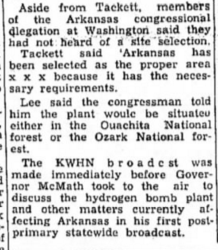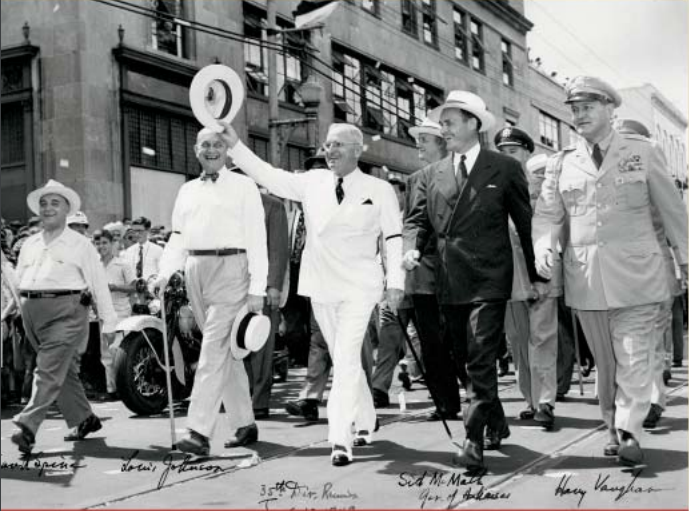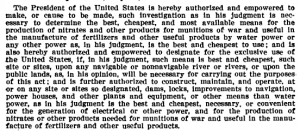
 Many dismiss the theory that the federal government would place a nuclear facility within a national park. After reading the 1950 newspaper article at left, I am even more convinced there could be such a facility at Cumberland Gap National Park.
Many dismiss the theory that the federal government would place a nuclear facility within a national park. After reading the 1950 newspaper article at left, I am even more convinced there could be such a facility at Cumberland Gap National Park.
The above article is taken from the Hope Star, an Arkansas newspaper, in August of 1950. Congressman Boyd Tackett has indicated that northern Arkansas would get an H-bomb plant. Although there is no formal announcement from the Atomic Energy Commission, Tackett said “his information came from that source.” Tackett said “the plant would be situated either in the Ouachita National forest or the Ozark National forest.”
Tackett said, “Arkansas has been selected as the proper area…because it has the necessary requirements.”
This story echoes the story of the munitions facility I believe was constructed at Cumberland Gap; the experts recommended the best suited place for the plant yet, in the end, their advice was supposedly unheeded.
The following article details the region’s frustration:
“Several months ago it was announced the government would build a large hydrogen bomb plant in the heart of the Ozarks…It was pointed out the plant would be located in the interior of the country, safe from possible attack from either coast. It would not be possible, it was declared, for an enemy plane to penetrate that far into the interior, or to inflict important damage on this important facility.
But the plans have changed, and instead of being located in this comparatively safe region the plant is to be built in the Savannah Valley, only minutes by air from the Atlantic coast. The proposed plant would be an easy target for enemy bombers.” (2)
The author laments that “politics” were the reason the plant location was changed; the Democratic party needed their southern voter numbers up. The author believes this was a move to win favor with those voters. I vehemently disagree. The likelihood the plant was installed there all along is a reasonable theory.
Just as President Wilson possibly visited a secret munitions facility at Cumberland Gap in 1918, did Truman visit a newly completed nuclear facility hidden in the Ozarks in 1952?

(1)”Tackett says state to get H-bomb plant.” Hope Star, August 26 1950.
(2)”Party must be served.” Terre Haute Star. December 14, 1950.
(3) “Presidential Pathways.” arkansas.com.
http://www.arkansas.com/!userfiles/presidential_pathways.pdf
